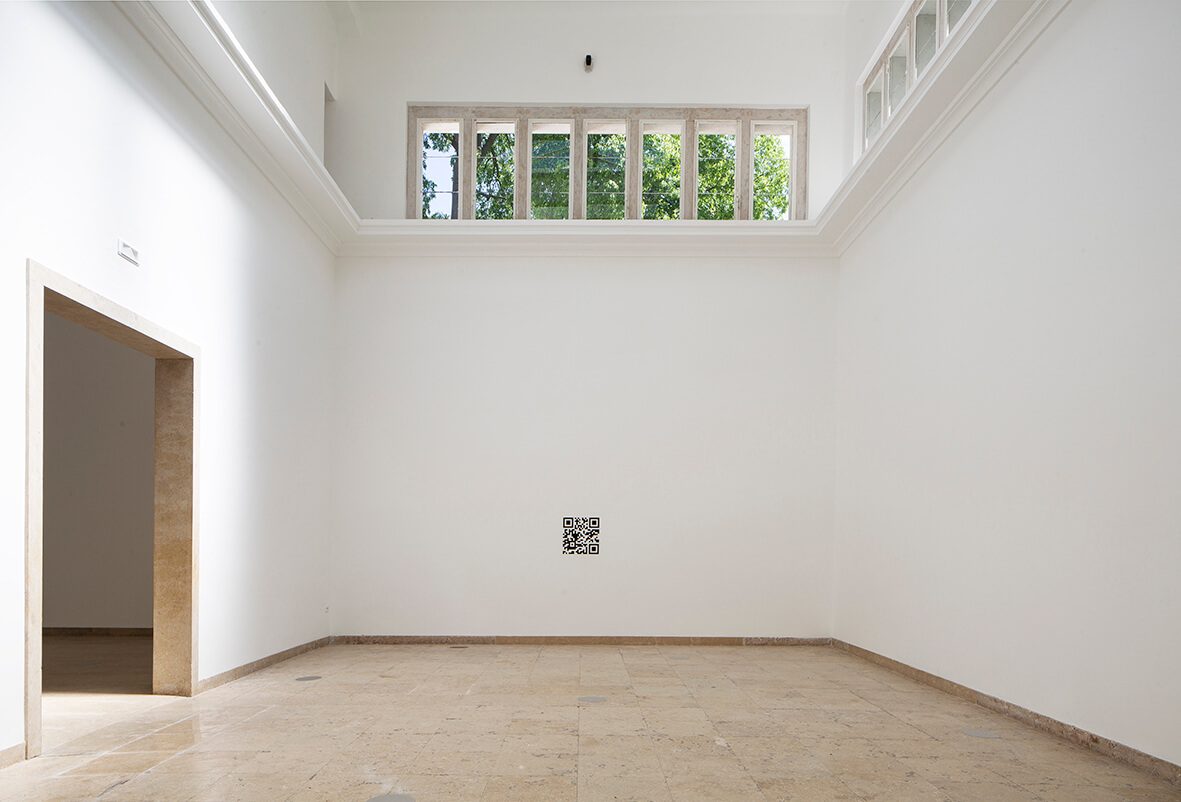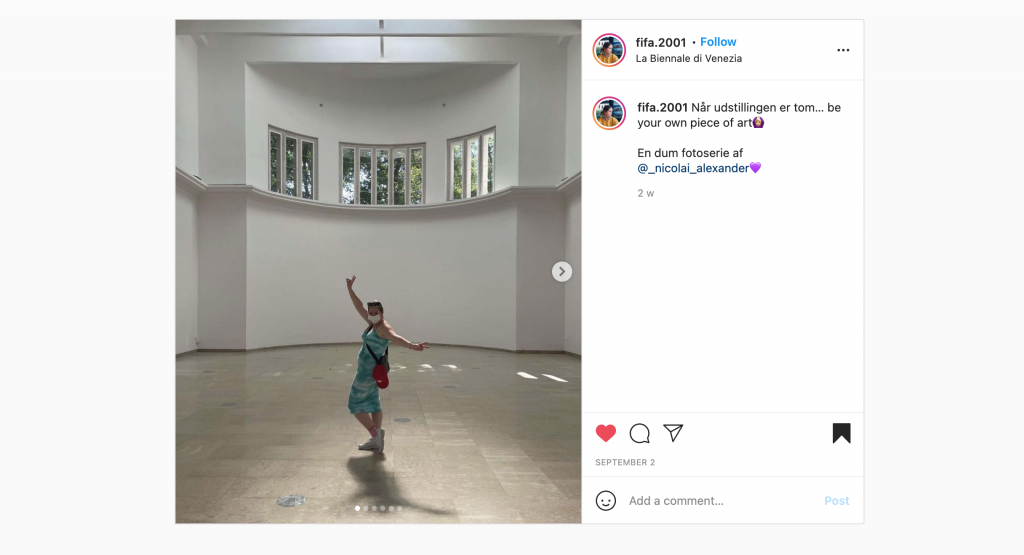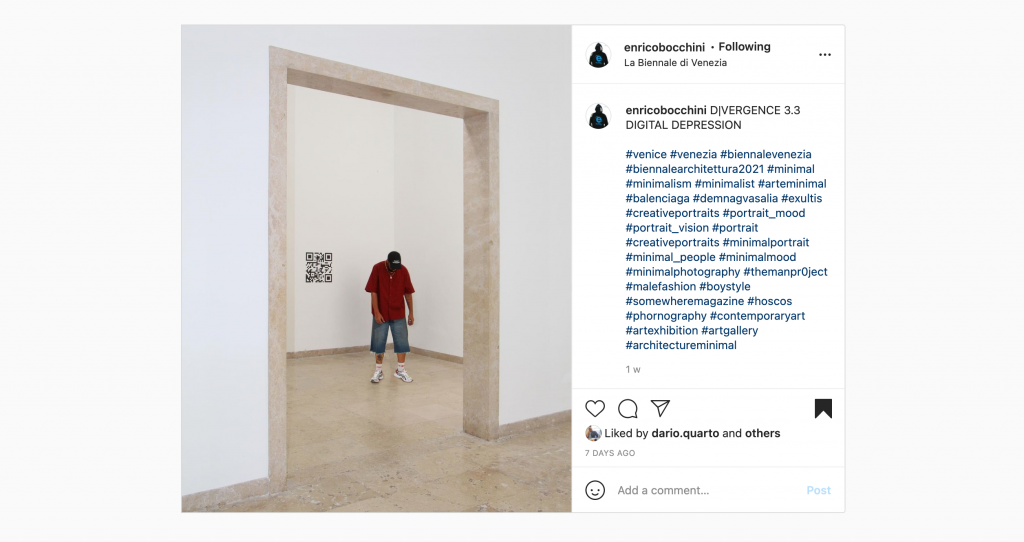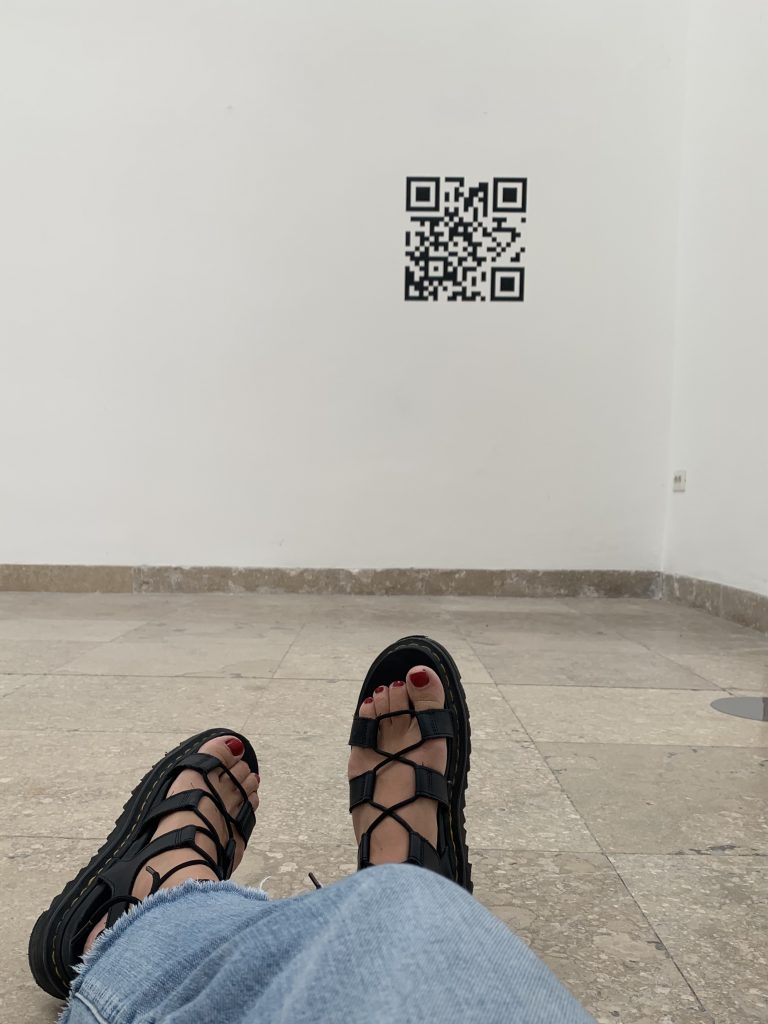The German Pavilion at the 17th Venice Architecture Biennale

Today with my first post I would like to address the topic of the Digital Exhibition. What do I mean by that? With the term Digital Exhibition I am referring to an exhibition that takes place on a digital platform or that it is mediated by digital technology such as Augmented Reality, QR codes, and Digital Medias. Currently, around the world, there are many exhibits of this kind each explores the digital through diverse approaches. Here I am going to talk about a very specific exhibition that I unexpectedly experienced at the Venice Architecture Biennale.
Indeed, this year the German National Pavilion at the Biennale is presenting a digital exhibition. The building is renamed “Cloud Pavilion” and it does not present any architectural models, photos/graphs on the walls, or lengthy descriptions- like most other exhibition spaces are filled with. So what constitutes the exhibition then? Without any “traditional media” the building is left empty and the only elements that occasionally colour the thick white walls are some black QR codes, which allow the visitors to explore the digital exhibition.
The first Qr code explains that the exhibition in the “Cloud Pavilion” is called “2038 New Serenity” and it is a window to the future, precisely a window to 2038. The other QR codes in the various rooms are connected to the main website which is a platform of augmented reality and videos. In the Augmented Reality the visitor sees the pink clouds in the rooms and each door opens either games or videos. The protagonists of the videos are either two young adults that from the future are brought back to 2021 Venice or some experts that are explaining the advancements and innovations of 2038 in terms of architecture and sustainability.

This digital exhibition combines fiction and reality and gives an overall positive view of the future in which the humanity has resolved the major crisis by relying on digital technology such as AI (Artificial Intelligence).The idea of an exhibition that imagines the future results from the question “How will we live together?” that Hashim Sarkis, Chief Curator, has posed as central theme of the 17th Architecture Biennale.
After seeing this exhibition many questions have come to my mind, but in this post I will address only the following: What are the main implications of this exhibition which strictly relies on the digital? I will try to explore this topic in the following paragraphs by pointing at the positive and negative aspects of the “Cloud Pavilion,” and towards the end of this post I will briefly present my personal response to this exhibition.
A positive element of this exhibition is that, although it differs from traditional exhibitions, “Cloud Pavilion” is equally able to generate a platform for dialogue and thinking. Indeed, the combination of fictional and informative medias are filling the space with inspirations and ideas. Thus, the empty white building works both as a provocation and as a blank canvas that stimulates the imagination. Another positive side of the exhibition “2038 New Serenity” is that the whole content can be viewed anytime trough the official website. In this way the content of the exhibition it is available to everyone, even without a Biennale ticket. The fact of freeing the access to the content, together with the distinctive choice of leaving an empty pavilion, are positive sides that expand the boundaries of the Biennale.

On the other hand, the downsides of this exhibition- that strictly relies on digital media- are that it is very ephemeral, meaning that there is a lack of concreteness and it can arouse feelings of emptiness and solitude. People like to see objects, they like to move around them and relate to them. An exhibition that is completely online and leaves an empty space does not offer that kind of visual and physical satisfaction. In addition, the emptiness juxtaposed with the digital presence can arouse feelings of melancholia and depression. Nowadays, the world is submerged by digital technology and this digital exhibition is affirming so.

For me the exhibition was initially a shock, I have never experienced something similar. However, it took me very little time to take confidence with the space and to feel at ease while exploring it. At one point I seated on the floor and watched some videos, which I found very thought-provoking. Sadly, I could not fully experience the AR and watch a lot of videos when I was in there because my phone was about to die 🙁 – I consider this the only downside for me. Overall, I think that the “Cloud Pavilion” is a clever curatorial experiment that creates a contrasts with the rest of the Biennale. As a last note I want to remark that, although it might be scary to think about the future as governed by the digital, we should see technology and the digital in a positive way. It is actually fun to experiment with the digital like the artists and curators of the “Cloud Pavilion” did.

I invite you to check out the exhibition website and to comment this post with more ideas and opinions on digital exhibitions!!


Alessia, I am so jealous you got to visit Venice Architecture Biennale. I checked out the exhibition’s official website and I am loving it! While visiting the online Cloud Pavilion, I had some existential questions. Is it what future will look like? Are we completely giving up the natural world and moving to VR?